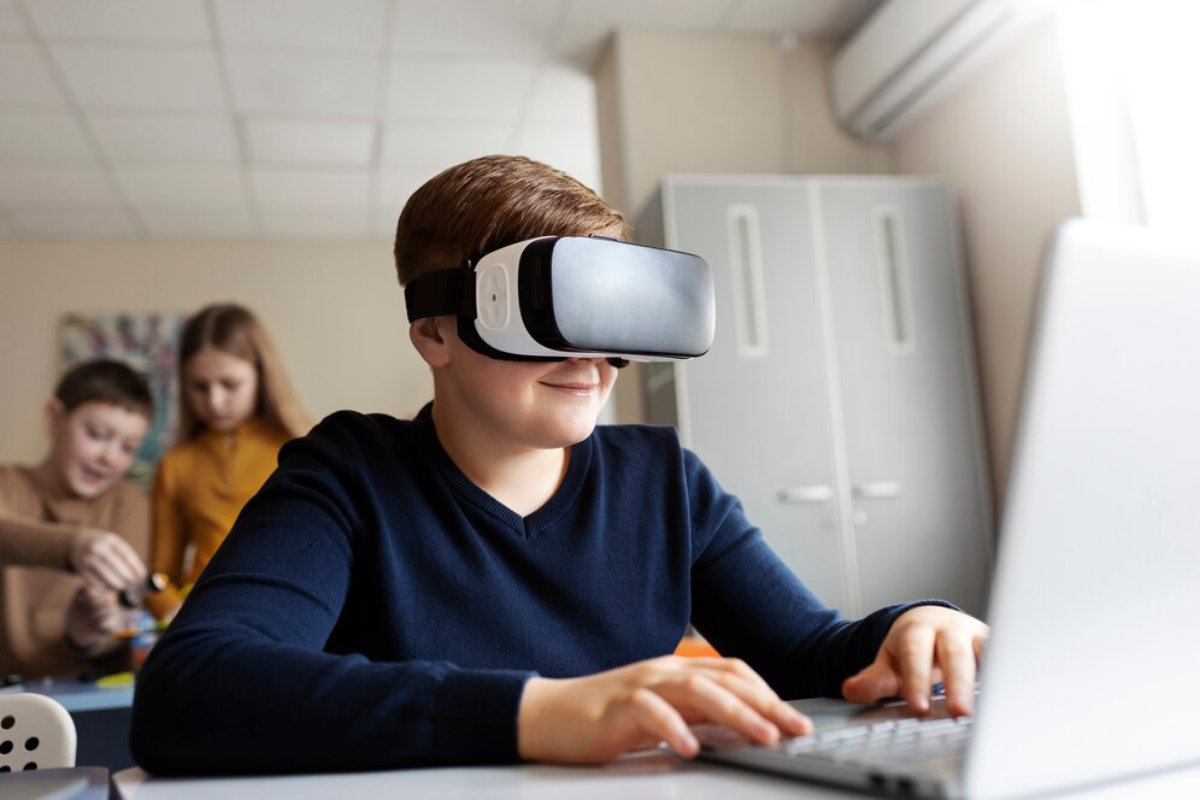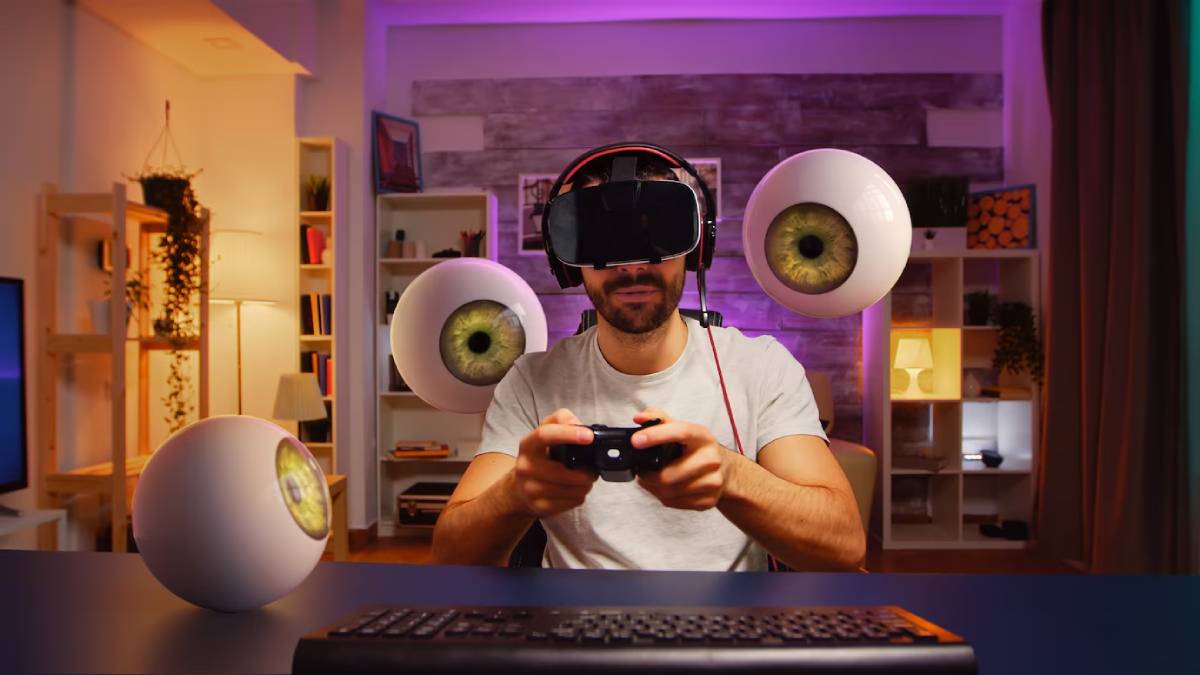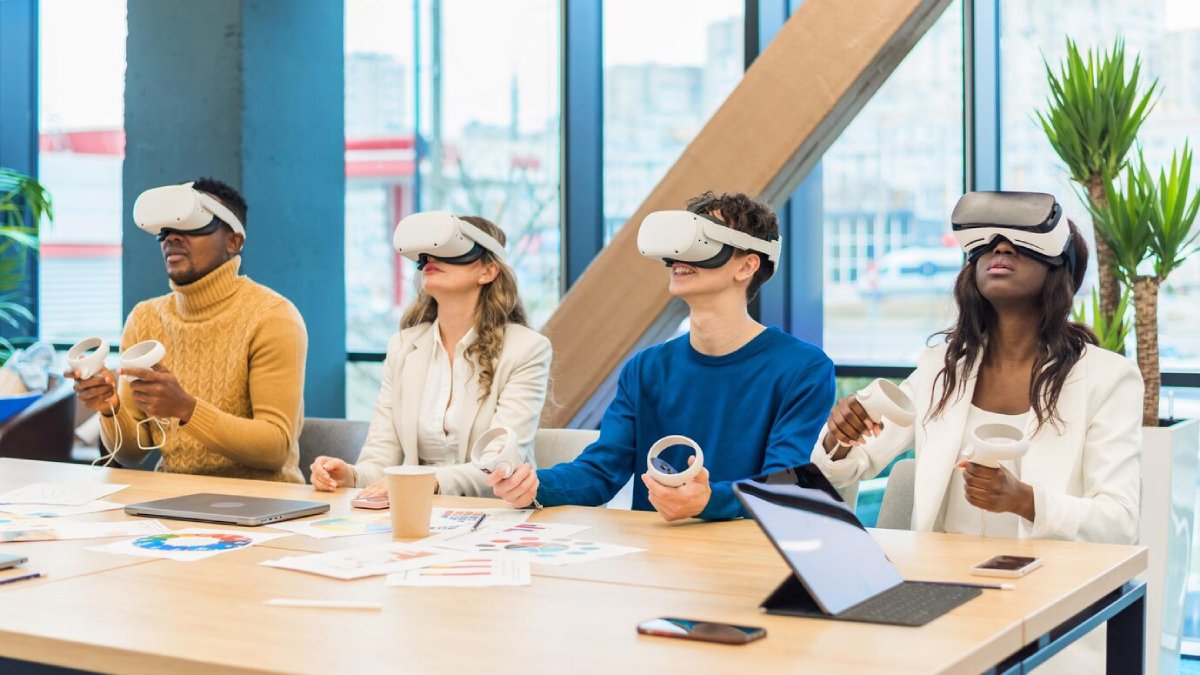
Eye-Tracking Technology in VR for Hands-Free Navigation
Virtual reality (VR) is always evolving—and so are the ways we interact with it. While many VR experiences still rely on handheld controllers, a new technology is changing that: VR eye tracking. This feature lets users control and explore virtual spaces just by looking, making hands-free virtual interaction possible.
For many, it’s a more natural and fluid way to use VR. But more importantly, it also opens up new possibilities for accessibility in VR—especially for users who have limited mobility or can’t use traditional controllers.
In this article, we’ll look at how eye-tracking works in VR, the benefits it brings, and how it’s making virtual reality more inclusive and easier to use.
What Is VR Eye Tracking?
VR eye tracking uses sensors inside the headset to follow your eye movements. These sensors track where you’re looking in real-time, letting the system respond based on your gaze.
That means you can:
- Highlight or select something just by looking at it
- Change settings or navigate menus without using your hands
- Focus visuals more clearly based on where your eyes are
- Collect helpful data about where users are paying attention
This technology turns your eyes into a kind of virtual pointer, making interaction feel quicker and more natural.

How Eye Tracking Enables Hands-Free VR
Most VR systems require hand movements—pressing buttons or pointing with controllers. That works well for games but not for every experience. Hands-free virtual interaction powered by eye tracking offers a more relaxed, seamless way to explore.
You might use it to:
- Move through menus just by looking at options
- Trigger events in the environment by focusing on an object
- Read or scroll through virtual content without touching anything
- Communicate intent or attention just by where your eyes go
It’s especially useful in social or storytelling experiences where large gestures aren’t needed.
Eye Tracking and Accessibility in VR
One of the biggest benefits of eye tracking is how it improves accessibility in VR. For users with physical disabilities, traditional controllers may be hard—or impossible—to use. Eye tracking gives these users a new way to interact.
It helps by:
- Providing an alternative to controller-based input
- Reducing physical strain during longer sessions
- Giving users with limited mobility more freedom in VR
- Supporting communication tools for users who are non-verbal
For people living with conditions like ALS, paralysis, or muscular dystrophy, this kind of technology can make a huge difference—giving them access to virtual experiences that were once out of reach.
Better Visuals with Foveated Rendering
Eye tracking doesn’t just improve interaction—it also boosts performance. One powerful use of the technology is called foveated rendering. This means the system focuses high-quality visuals only where you’re looking, while lowering detail in your peripheral vision.
Why that’s helpful:
- It saves computing power and memory
- It allows higher-quality graphics without needing top-tier hardware
- It improves battery life for wireless headsets
- It reduces lag and keeps things running smoothly
The result is a better-looking, faster experience that feels more immersive—without using extra resources.
How Eye Tracking Is Used Across Industries
VR eye tracking isn’t just for gamers. It’s being used in many different fields to improve training, research, and communication.
Healthcare
Therapists and doctors are using it for rehab exercises, mental health therapy, and even eye-movement-based communication.

Education
Teachers can track student focus in virtual classrooms or training simulations. It also supports learning tools that adapt in real-time.
Retail and Advertising
Marketers use eye tracking to see which products or areas of a store get the most attention in virtual spaces.
Design and Engineering
Collaborative VR sessions benefit from seeing where team members are looking, especially when working with 3D models.
Gaming
Developers are adding gaze-based controls and storytelling tools to make games more responsive and emotionally engaging.
VR Devices That Support Eye Tracking
Several headsets already have VR eye-tracking built-in—or plan to include it soon.
Meta Quest Pro
Uses eye tracking for better visuals, more expressive avatars, and smoother interactions.
HTC Vive Pro Eye
A high-end headset used for research, business, and training.
PlayStation VR2
Sony’s new VR headset includes eye tracking to make games more immersive and intuitive.
Varjo XR and VR Series
Advanced headsets are designed for professionals in fields like aviation and healthcare.
As eye tracking becomes more affordable, we’ll likely see it in more mid-range and consumer devices.
Things to Keep in Mind
While the benefits are clear, eye tracking in VR still comes with some challenges.
- Privacy: Eye movement data can be personal. Developers must protect user privacy.
- Cost: Headsets with eye tracking tend to be more expensive, though this may change as the tech becomes more common.
- Accuracy: Proper calibration is key. If not done right, the system may not track your eyes correctly.
- Limited support: Not all VR apps are built to take advantage of eye tracking—yet.
Still, most of these challenges are being addressed as the technology matures.
What’s Next for VR Eye Tracking?
Looking ahead, eye tracking is expected to become a standard part of most VR systems. Here’s what we may see soon:
- More accessible VR apps that use eye tracking as a main control method
- Smarter avatars that mimic where a user is looking or how they’re reacting
- Better personalisation through attention tracking and user behaviour
- Multimodal input combining eye tracking with voice and gesture for full-body control
- Wider adoption across entertainment, education, business, and healthcare
This technology is part of a bigger movement to make VR more intuitive, immersive, and inclusive.
Final Thoughts: A Simpler, Smarter Way to Use VR
With Virtual reality eye tracking, users can explore virtual spaces more naturally and comfortably—no controllers are required. This is a breakthrough for people with limited mobility and a big step forward for anyone who wants easier, faster interaction.
As technology continues to improve, hands-free virtual interaction will likely become the new normal—not just a bonus feature. And for those who need it most, it’s more than a convenience. It’s a doorway into digital worlds they’ve never had access to before.


